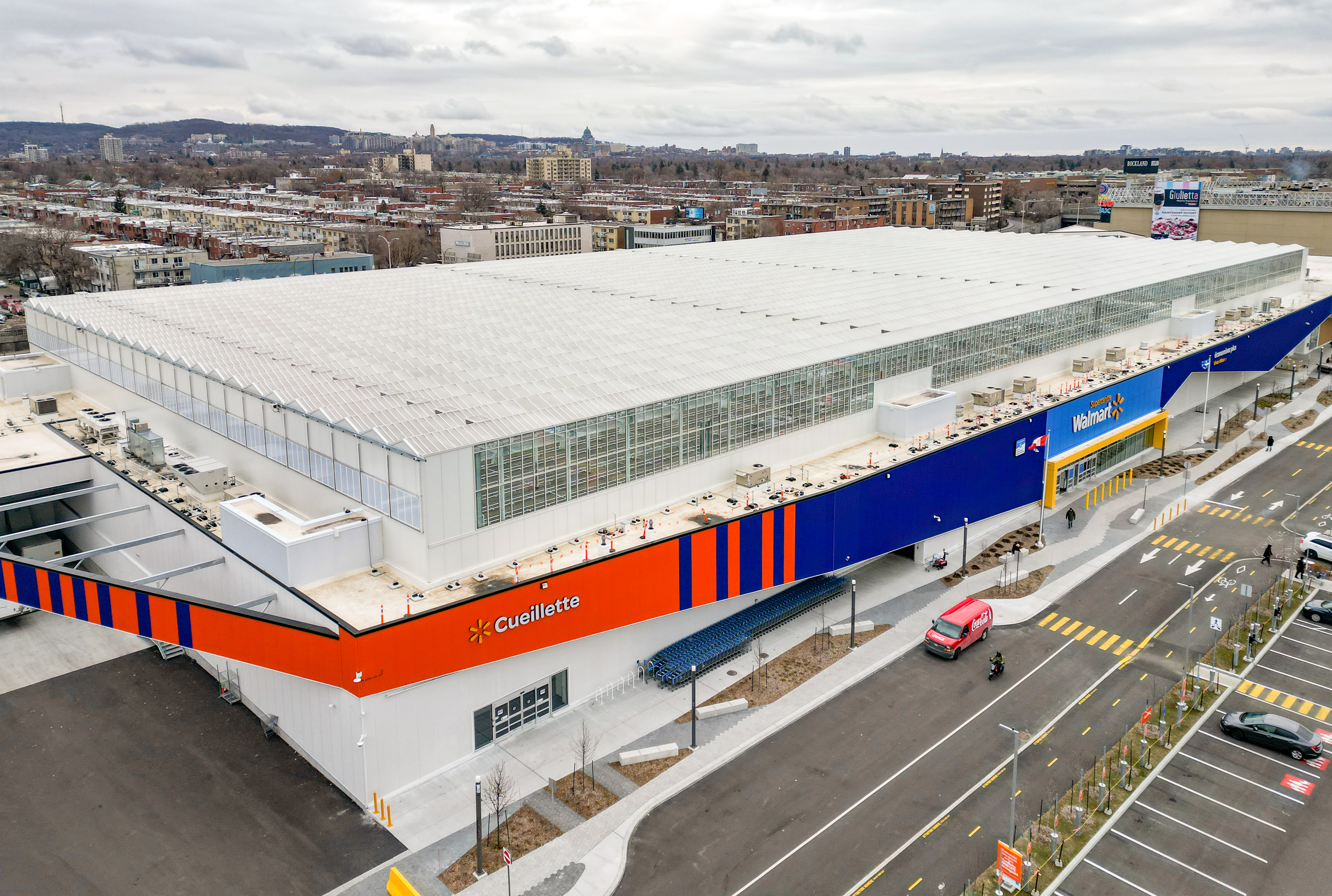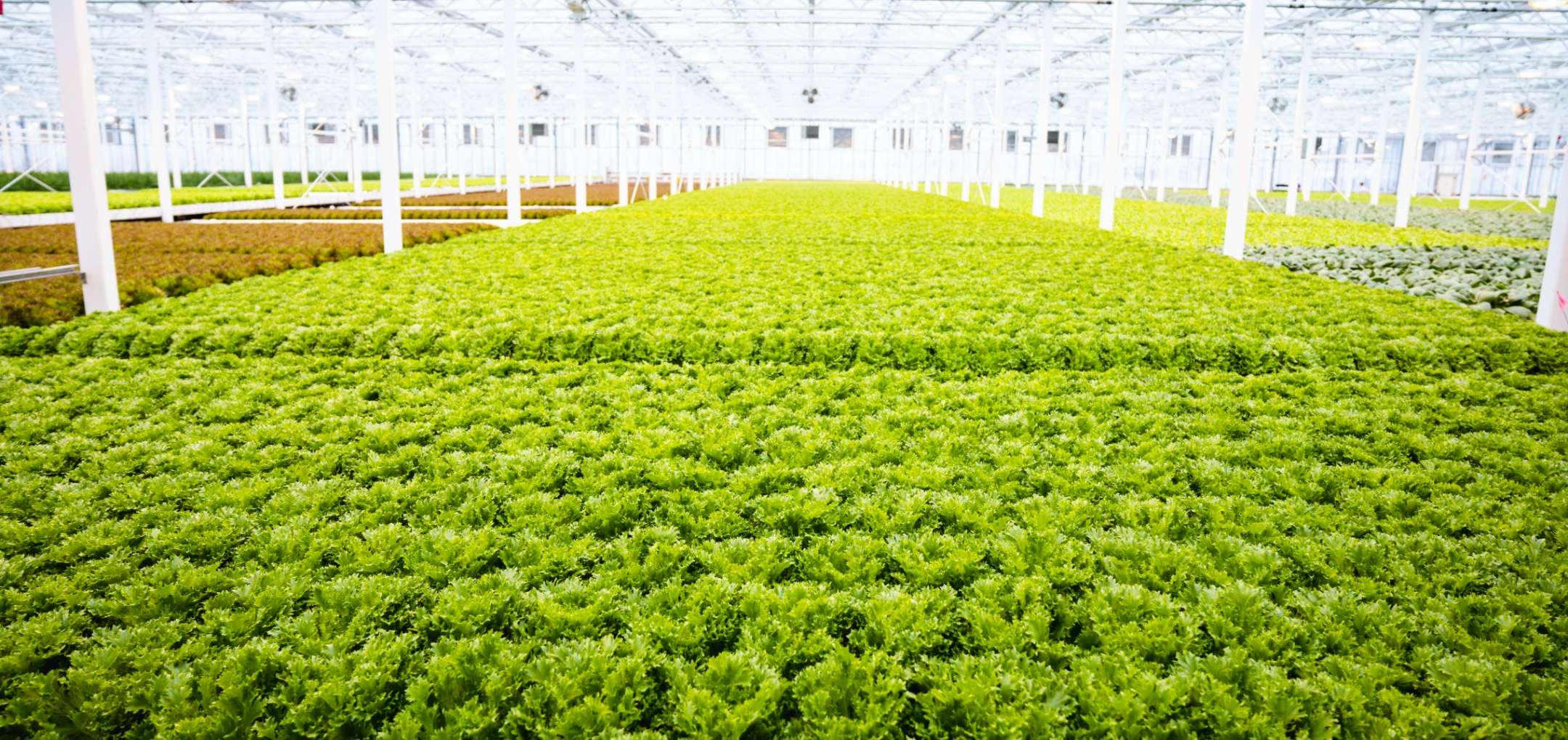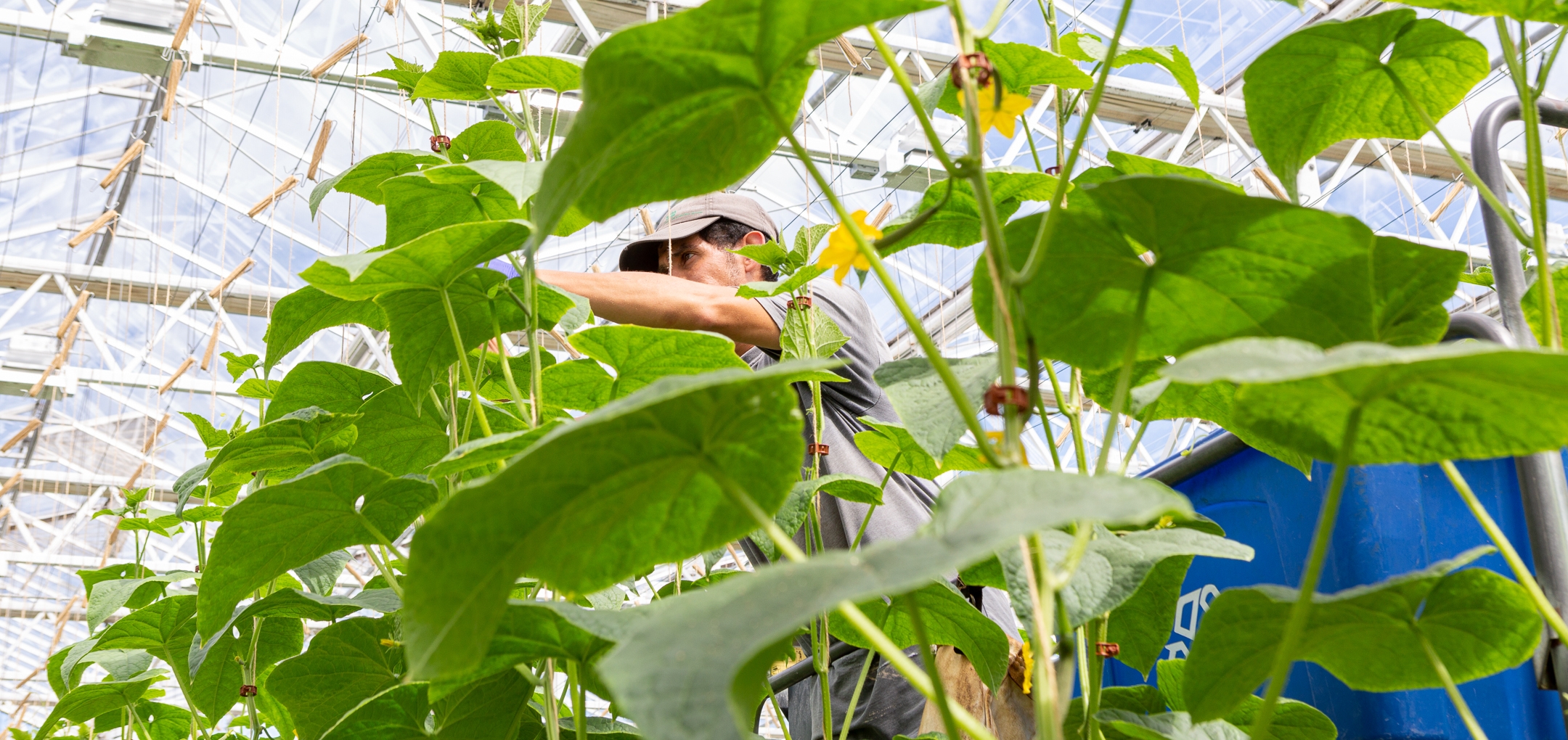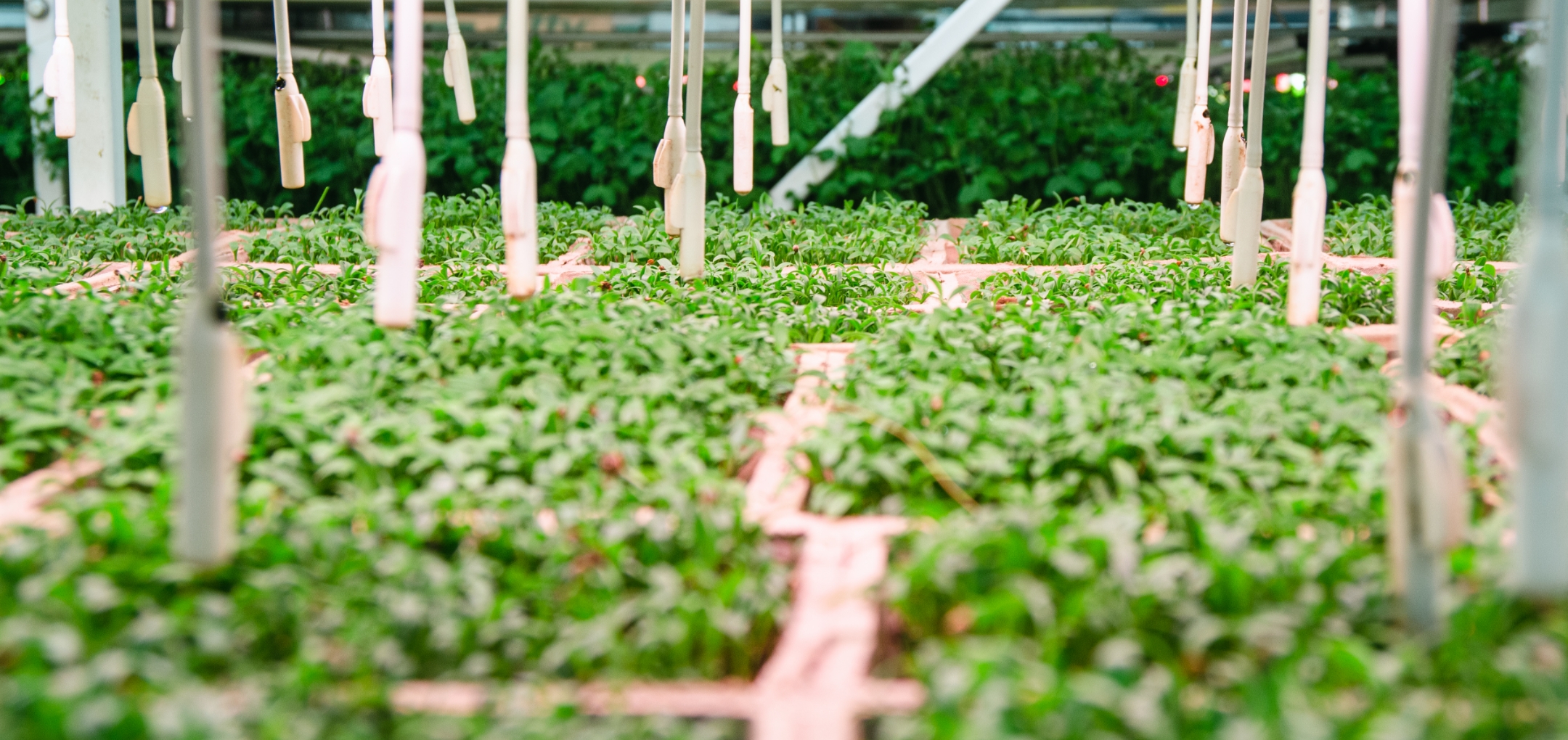Our greenhouses
Rooftop farms are an amazing way to grow and distribute fresh, local, responsible veg. We built the world’s first commercial rooftop greenhouse on an industrial building in Montreal’s Ahuntsic neighbourhood, to prove that high-yield and year-round farming is an innovative, more sustainable, and commercially viable way to feed cities. Since then, we’ve built new, bigger, and more efficient greenhouses to grow more vegetables and change the way people eat.


Marché Central, Montreal
Year built2024
Size127,000 square feet
Using advanced design elements, including high-intensity LED lights, insulated double-paned perimeter glass, a diffused glass roof, and double curtains, this greenhouse is our most technologically advanced site yet and is anticipated to generate up to 20% more produce than conventional greenhouses of similar size.

Indoor Farm, Ville Saint-Laurent Montreal
Year built2023
Our first-ever indoor farm features technology typically used in greenhouses with a single-level hydroponic growing system. Designed to show the practicality of low-cost indoor agriculture, the site maintains optimal light, energy, and nutrient supply for a variety of crops without relying on fossil fuels.
Our five tenets of responsible ag.
Our goal is to meet our community's needs without compromising those of future generations. Here are our five guiding principles that bring us one step closer to our mission of building a better food system.Reducing waste
Saving water
Controlling pests
Using no new land
Saving energy
What's next?
Our team is hard at work on new innovations to further improve sustainability, responsibility and improving availability.
Our vision is a city of rooftop farms.















